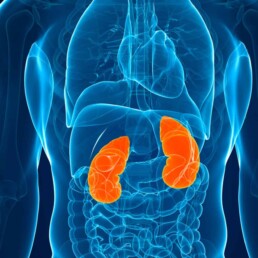In recent years, the ubiquity of microplastics in our environment has become a growing concern, particularly regarding their potential impact on human health. Microplastics, tiny plastic particles less than 5mm in size, have been found in various everyday items like water bottles, food packaging, and even in the air we breathe. In this blog, we will discuss the effects of microplastics on kidney health.
By Majd Isreb, MD, FACP, FASN, IFMCP
Understanding microplastics: A deep dive
Microplastics are defined as small plastic pieces less than five millimeters long, which can be harmful to our ocean and aquatic life. These tiny pollutants originate from a variety of sources, including larger plastic debris that degrades into smaller and smaller pieces.
Additionally, microplastics are directly released into the environment in the form of microbeads from beauty products and microfibers from synthetic clothing. Due to their small size, microplastics can easily bypass water treatment plants, leading to widespread pollution in water bodies, including oceans, rivers, and lakes.
The pervasiveness of microplastics in our environment raises significant concerns due to their potential to enter the food chain. Marine animals often ingest these particles, and through bioaccumulation, microplastics can move up the food chain to humans.
Studies have shown that microplastics are found in common foods and beverages, such as seafood, salt, and bottled water, posing a risk to human health. Their presence in the human body has been linked to various health issues, including inflammation and potential cell toxicity, highlighting the urgent need for strategies to reduce microplastic pollution and exposure.
Join us to end the kidney disease epidemic
Hidden sources of microplastics
Hidden sources of exposure to microplastics include tea bags, bottled water, cosmetics with microbeads, synthetic clothing fibers released during washing, seafood contaminated with microplastics, and dust that settles on food and surfaces. These sources contribute to the inadvertent ingestion and inhalation of microplastics by humans, posing potential health risks.
This study, for example, highlights that plastic chopping boards, particularly those made from polypropylene and polyethylene, are significant sources of microplastic contamination in food. The release of microplastics varies with the material of the chopping board and the chopping style, with polypropylene boards releasing more microplastics than polyethylene.
Additionally, the presence of vegetables like carrots during chopping can increase microplastic release from polyethylene boards. Annual human exposure to microplastics from these sources can be substantial, though preliminary toxicity tests on mouse cells did not show immediate adverse effects.
Effects of microplastics on health
Microplastics pose a multifaceted threat to human health, impacting various bodily systems, including the digestive, respiratory, endocrine, reproductive, and immune systems, through ingestion and inhalation.
They can cause inflammation, oxidative stress, endocrine disruption, and neurotoxicity, affecting the body’s metabolic processes and leading to various diseases.
Despite the clear indications of harm in cellular and animal studies, comprehensive epidemiological research is needed to fully understand the implications of microplastics on human health and establish safe exposure levels.
Effects of microplastics on kidney health
Studies on the effects of microplastics on kidney health come from laboratory models. For example, this study showed that exposure to microplastics caused mitochondrial dysfunction, inflammation and cell death in human and mice tubular cells.
Most of the research on the impact of microplastics on kidney tissues was published in the last three years. Studies highlight their potential nephrotoxicity through inflammation, oxidative stress, and lipid metabolism disturbance.
Studies show microplastics can cause cellular and tissue damage, including mitochondrial stress and autophagy in kidney cells. Chronic exposure to microplastics, often combined with other pollutants, exacerbates kidney damage through oxidative stress, apoptosis, and fibrosis.
Practical steps to minimize the exposure to microplastics
To minimize exposure to microplastics, consider the following steps:
- Opt for natural fiber clothing and textiles.
- Use glass or stainless steel containers instead of plastic.
- Avoid single-use plastics.
- Choose cosmetics and personal care products without microbeads.
- Prefer glass or stainless steel bottles for drinking.
- Prepare meals with fresh ingredients to avoid packaged foods.
- Avoid plastic cutting boards.
- Use a high-quality water filtration system that is tested to remove microplastics.
The bottom line on the effects of microplastic on kidney health
The presence of microplastics in our environment and their potential to harm kidney health cannot be overlooked. Chronic exposure to microplastic has been found to damage kidney cells. It’s essential to continue research in this area and to consider ways to reduce our exposure to microplastics. By making informed choices about our products and advocating for policies limiting plastic pollution, we can help protect our kidneys and overall health from the unseen dangers of microplastics.








